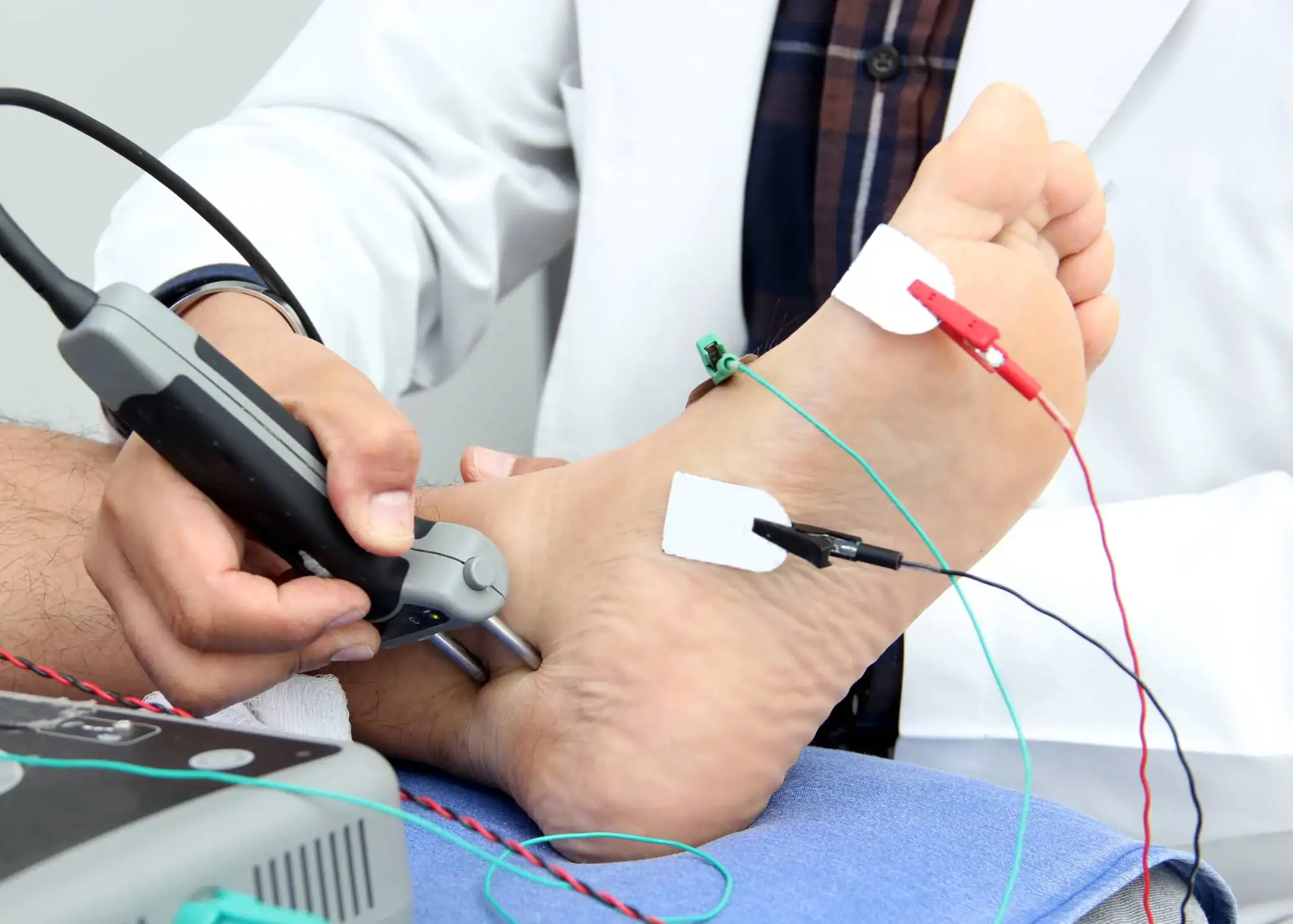Advanced nerve and muscle diagnostic testing that pinpoints exactly what’s causing your numbness, tingling, or weakness.
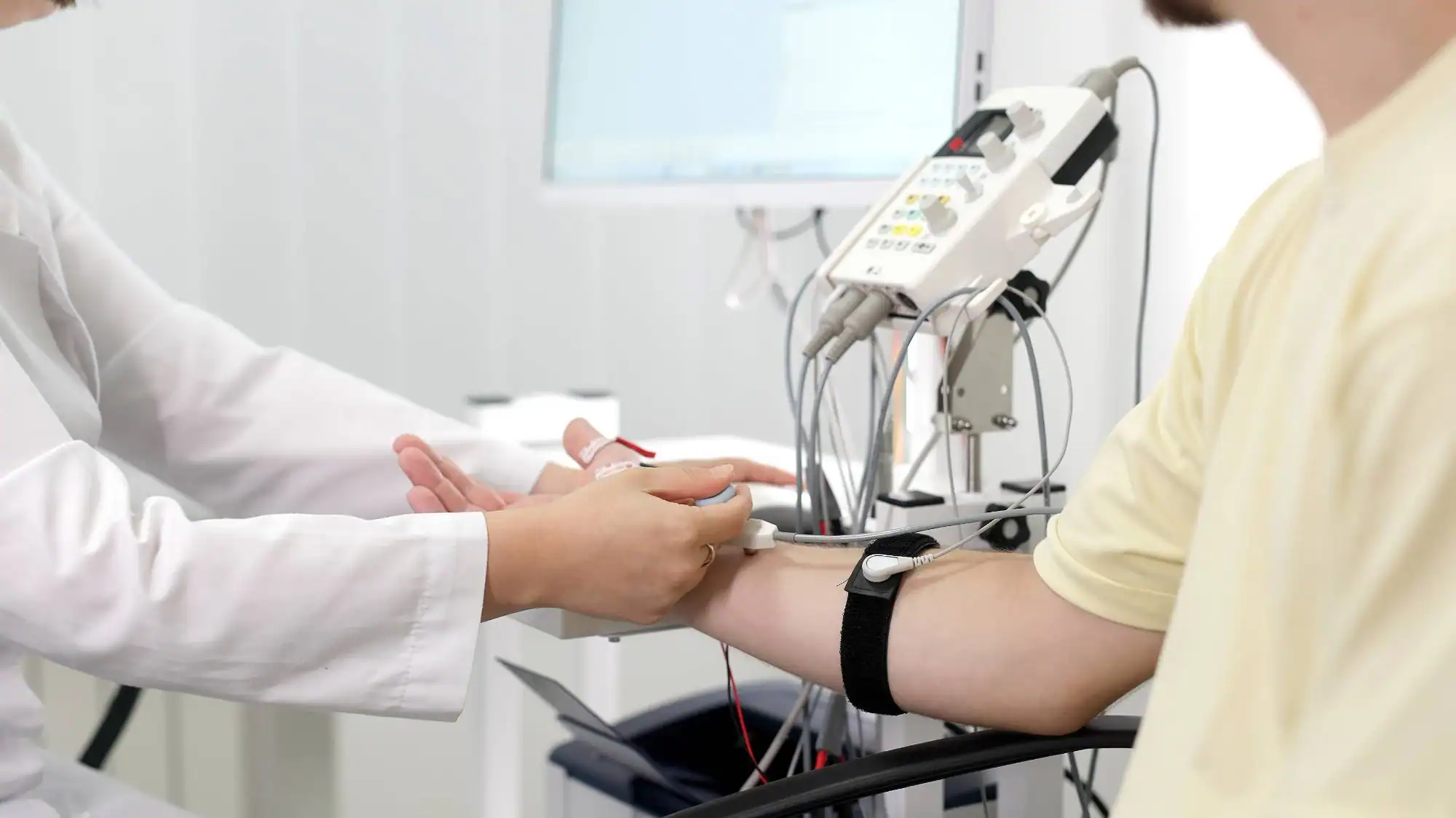
Reviews
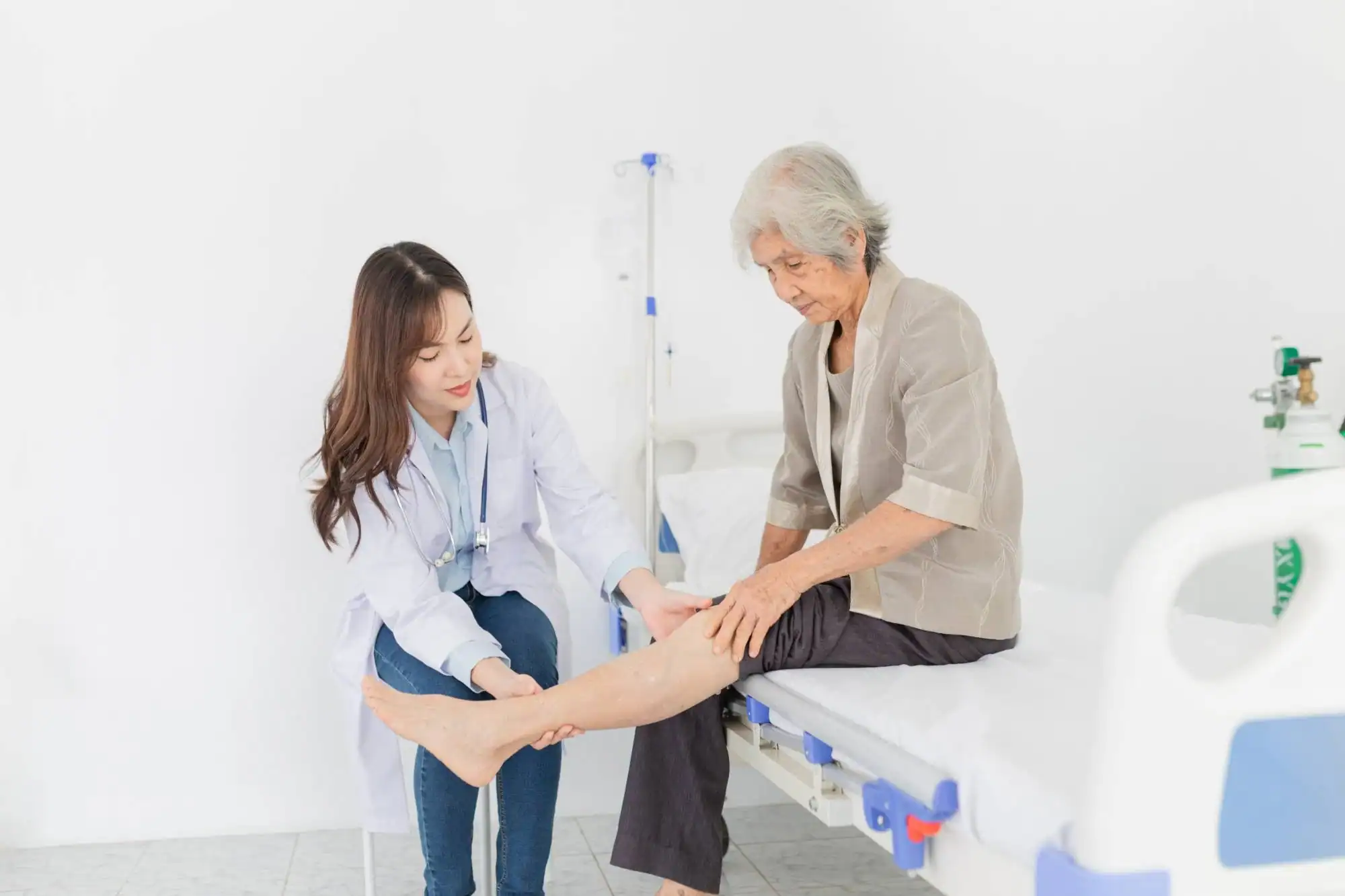
You’ve been dealing with symptoms that doctors can’t quite explain. The numbness in your hands keeps you awake at night. The tingling in your feet makes walking uncomfortable. The muscle weakness affects your grip strength and daily activities.
Nerve and muscle testing gives you objective answers. Instead of guessing about what’s causing your symptoms, you get precise measurements of how your nerves and muscles actually function. This isn’t about managing symptoms – it’s about understanding the root cause so you can address it properly.
When you know exactly which nerves are affected and how severely, your treatment becomes targeted and effective. No more trial-and-error approaches or wondering if your symptoms are “all in your head.” The test results provide clear evidence of what’s happening in your body and guide your next steps toward relief.
NY Spine Medicine has been serving Fair Isle and the surrounding Florida communities with specialized nerve and muscle diagnostic testing. We focus specifically on spine-related conditions and the nerve complications that often accompany them.
We understand that getting tested can feel overwhelming, especially when you’re already dealing with uncomfortable symptoms. That’s why we take time to explain exactly what each test measures and what your results mean for your specific situation.
You’re not just getting a test – you’re getting answers from specialists who see these conditions every day and know how to interpret the results in ways that actually help you move forward with confidence.
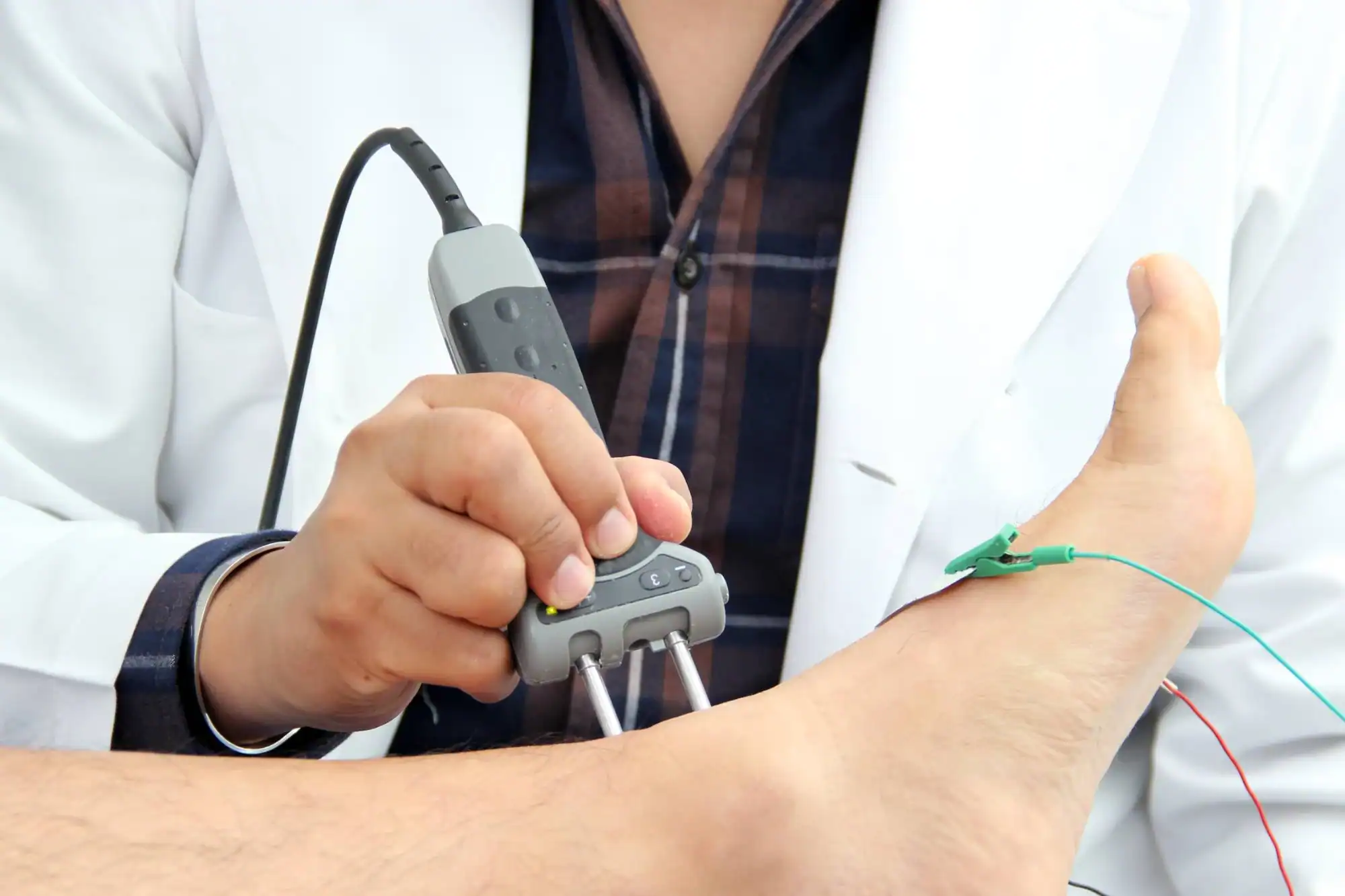
The nerve conduction study comes first. Small electrodes are placed on your skin to measure how quickly electrical signals travel through your nerves. This part is completely non-invasive and feels like mild static electricity. It shows whether your nerves are transmitting signals normally or if there’s damage slowing them down.
Next is the electromyography (EMG) portion. A thin needle electrode is inserted into specific muscles to measure their electrical activity. While this sounds uncomfortable, most patients find it much less bothersome than expected. The needle detects whether your muscles are responding properly to nerve signals.
The entire process typically takes 30 to 60 minutes depending on which areas need testing. You’ll get your results immediately, along with a clear explanation of what they mean. No waiting weeks for answers or trying to decipher confusing medical reports on your own.
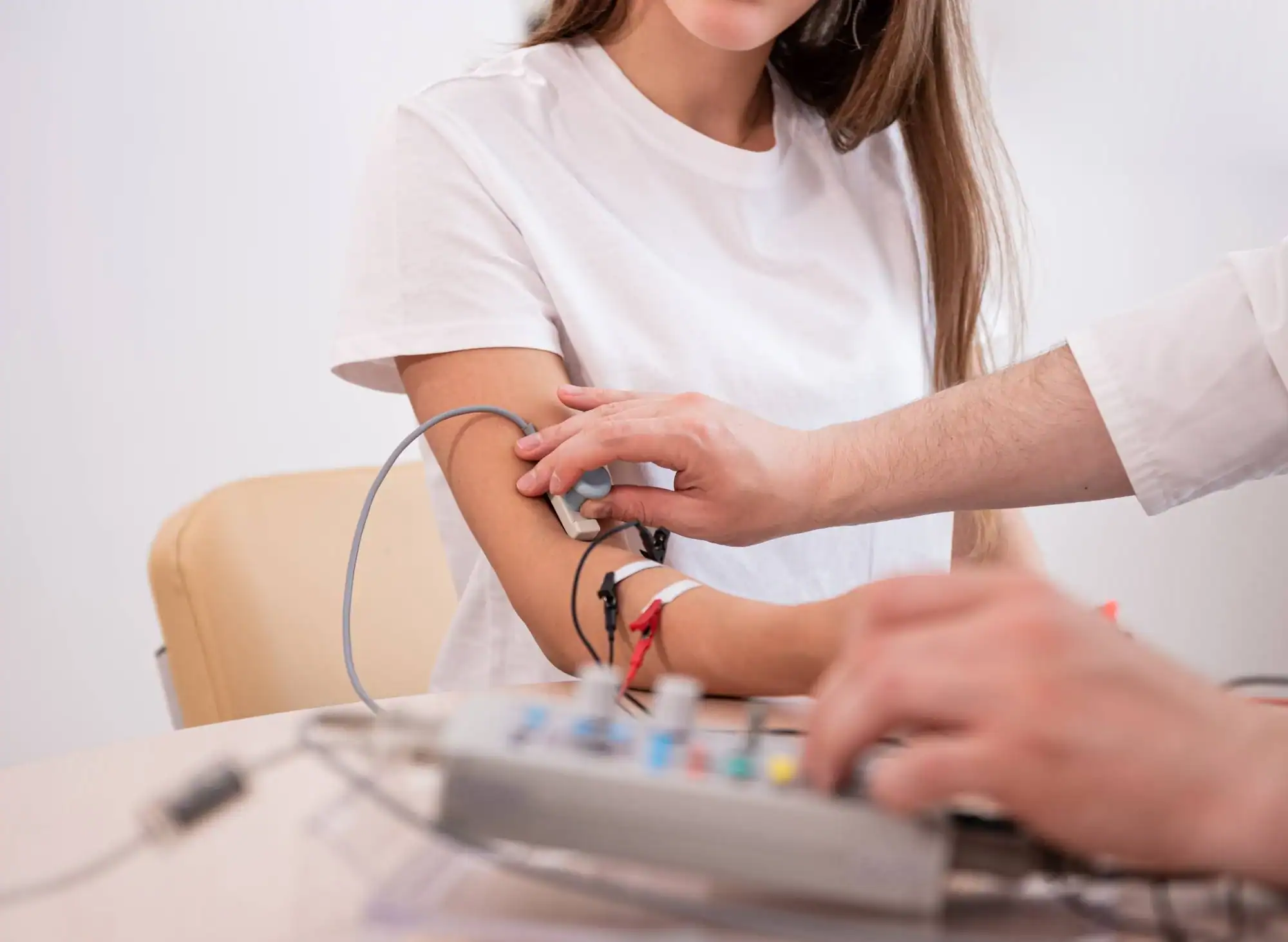
Ready to get started?
Your testing includes both nerve conduction studies and electromyography to give a complete picture of your nerve and muscle function. This combination reveals whether your symptoms stem from nerve damage, muscle problems, or both.
The evaluation covers the specific areas where you’re experiencing symptoms. For hand numbness, the focus is on median, ulnar, and radial nerve pathways. For leg symptoms, testing examines the sciatic nerve branches and related muscle groups. Each test is customized based on your particular complaints and physical examination findings.
You’ll receive a detailed report explaining your results in understandable terms, plus recommendations for next steps. Whether that means physical therapy, medication, injections, or further evaluation, you’ll know exactly what your options are and why each one makes sense for your specific condition.
